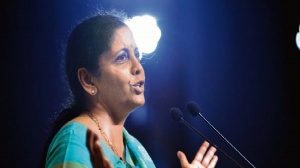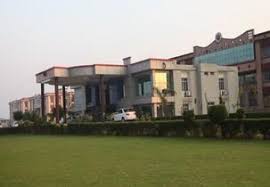
Finance minister Nirmala Sitharaman started the process of rolling out a slew of measures to boost industry’s access to credit, including opening a ₹10,000 crore liquidity window for home financiers.
Daily Current Affairs Quiz 2019
Sitharaman will meet chiefs of all state-run as well as private sector banks on Monday to discuss issues related to credit growth in key segments of the economy, including automobile, retail, small businesses, affordable housing and non-banking financial companies and housing finance companies (HFCs).
Sitharaman and bank chiefs are expected to discuss priority areas “for the banking sector in the coming months for accelerating gross domestic product growth”, the finance ministry said.
The minister will also meet representatives of key ministries handling micro, small and medium enterprises (MSMEs), electronics and information technology, rural development and commerce next week to find ways to implement over 100 recommendations by a panel led by former Securities and Exchange Board of India chairman U.K. Sinha for improving the competitiveness of the MSME sector and to enhance the chances of small businesses to access credit.
Indicating that the finance ministry is determined to tackle the liquidity crunch affecting the housing finance sector, the statement said the National Housing Bank was opening a fresh liquidity window for HFCs. A liquidity infusion of ₹10,000 crore for housing financiers is being made available from Friday for lending to individuals looking to purchase affordable homes. HFCs, a key market for non-bank lenders, was one of the segments hit by the liquidity crunch, which, in turn, was precipitated by a series of defaults by Infrastructure Leasing and Financial Services Ltd last year.
According to N.R. Bhanumurthy, professor at the National Institute of Public Finance and Policy, a think tank, the policy response to the liquidity crunch should reflect the extent of the problem. “There doesn’t seem to be much clarity on the extent of the crisis in the banking and non-banking sectors. Once we assess that accurately, we could frame the right solutions,” he said.
The ministry also said it has endorsed the Reserve Bank of India’s suggestions on how to implement Sitharaman’s budget proposal for providing partial credit guarantee to state-run banks buying pooled assets of non-bank finance lenders. The idea is to ensure that financially sound shadow banking entities should not struggle for funds.
Experts welcomed the decision to take more measures to improve access to credit for businesses. “This is one short-term measure that is very much needed, which will help the economy. Another short-term measure that is needed is to get all government departments on board in framing policy responses to economic issues that will improve efficiency in the system and help lower the cost of doing business,” said Rajat Kathuria, director and chief executive, Indian Council for Research on International Economic Relations.
The announcements imply that the National Democratic Alliance administration is shifting gears to decisively address an economic downturn that could come in the way of Prime Minister Narendra Modi’s goal of building a $5-trillion economy over the next few years.
The sobering trend seen in India’s economic indicators coincide with worries over a global recession amid an escalating US-China trade war that threatens business confidence.
Official data earlier this week showed that output of the eight infrastructure sectors in India, which constitute over 40% of the index of industrial production, remained almost flat in June. The economy, which expanded at 8% in the first quarter of FY19, subsequently slowed down to a five-year low of 5.8% in the quarter ended March 2019— resulting in 6.8% growth for the full financial year.
RBI, which has so far cut the benchmark interest rate thrice in 2019 by 25 basis points each, may go for another round of rate cut when its monetary policy committee meets on 7 August.
According to a monthly review shared earlier this week by EY consultancy, India’s $2.7 trillion economy needs a real growth rate close to 9% in order to reach the $5 trillion-mark by 2024-25, assuming an inflation rate of 4%.
While improving access to finance for businesses and non-bank lenders, the government is also making policy changes rapidly to tackle the toxic assets in the banking sector that has affected banks’ ability to finance new projects. The Parliament had recently cleared amendments to the Insolvency and Bankrupcty Code to enable quick decision-making among creditors of bankrupt companies and to reduce the time lost in litigation, while rescuing or liquidating such companies. It has also announced steps to give relief to farmers by way of income support, and to traders, shop keepers and the self employed in terms of pensions.





